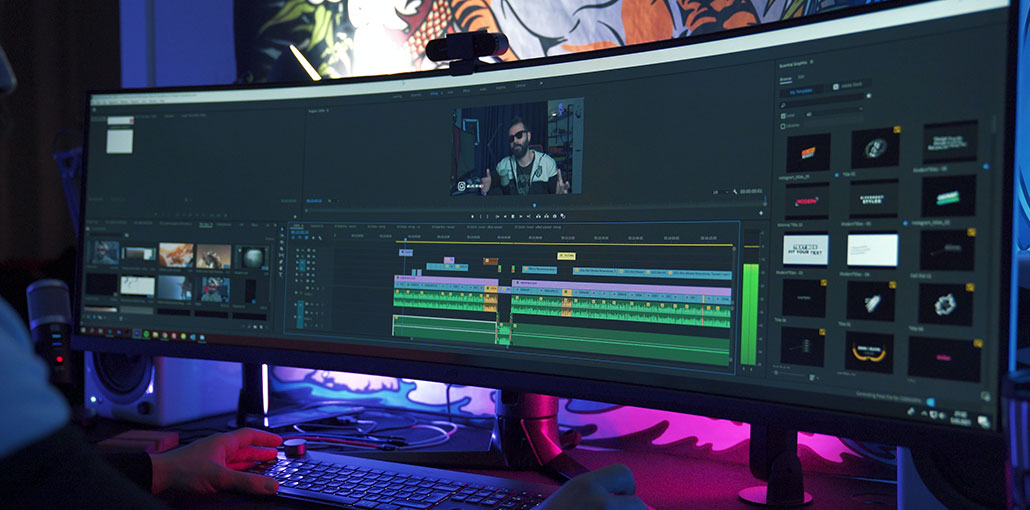The use of neural networks and artificial intelligence has grown ingrained in our daily lives. Video editing is one of the fields that actively employ AI. But how does it work exactly? And do all the advantages of using AI for video editing make it worthwhile?
Is AI Really Useful for Video Editing?
Let’s say you want to edit video footage. It’s years old, made using an old camera, and its quality is less than optimal. Alternatively, you just want to make a video recorded on a fancy gadget clearer and more detailed. In both cases, artificial intelligence can help.
AI (artificial intelligence) technology has found application in many areas of modern life: medicine, education, business, and even art. Similarly, it also helps edit videos. And when it does, it offers much more than simple improvements like the possibility to add subtitles to video.
The possibilities here are massive. For example, we can enhance video to 4K Ultra HD from the original 480p. Or make a movie from 1895 so high quality that viewers will take it for a modern Hollywood masterpiece. AI can also correct minor flaws in the video, such as blackouts and blurred objects.
Also read: 6 Most Common Video Problems and Easy Ways to Fix Them
How Does AI for Video Editing Work?
When working with projects that involve images and video, what you’ll use is convolutional neural networks (CNN). This technology reduces the amount of information that is stored internally. It also triggers the process of finding the reference features of the image, such as edges, contours, and corners. These features are recognized by CNN filters, which is why they are better at working with high-resolution images. Thus, it is this technology that is the main element of any artificial intelligence video enhancement tool.
Roughly speaking, video editing is a sequence of operations performed for each frame.
The process includes:
- Decoding — video frame conversion from the compressed format to the original format.
- Computation — a specific operation with the frame.
- Encoding — processed frame conversion back to the compressed state.
Despite the fact that this approach looks simple and easy to implement, it’s resource-intensive and complicated. Specialized services based on pre-trained neural networks will help simplify the task. There will be no need to code anything.
What Can AI Do to Enhance Your Video?
Using AI, you can run the initial sequence of frames through an intelligent analyzer capable of finding complex patterns. As a result, you can:
- Recover lost fragments
- Provide high-quality restoration of shades and textures
- Give a more natural look to objects and human faces
- Deinterlace footage
How Can You Enhance Your Videos Using AI?
In order to convert a low-resolution video to a high-resolution one, you’ll need to use the method of upscaling. When upscaling an HD image to UHD (4K), you need to fill the extra 6 million pixels with something. The task of upscaling is to determine what each of the 6 million new pixels will show based on what the adjacent ones are showing. This process is called interpolation.
To elaborate, interpolation is a software method that changes the resolution of the video by adding new pixels to the frame. In other words, to increase the resolution of the picture by 5, you’ll need to put 4 more pixels next to it using AI. This method requires certain computing resources, just like everything that is connected with neural networks.
What Are the Advantages of AI for Video Enhancement?
The above-mentioned process helps you solve the issue of video quality enhancement. However, it’s quite clear that adding new pixels around an existing one is not possible manually. Because a video consists of many frames and each one of them has to be processed, such a task is physically impossible.
Fortunately, artificial intelligence algorithms offer the ability to improve video quality automatically. This is their difference from classic quality improvement tools that are not based on AI. We don’t need super skills in programming to use artificial intelligence software.
Also read: Top 10 Green Screen Software for Video Editing
What Are the Disadvantages of Using AI for Video Editing?
With all that being said, it’s important to remember that using artificial intelligence for video enhancement is not a one-size-fits-all solution. While it might seem amazingly helpful, there is a number of drawbacks to consider.
AI is Not Infallible
Artificial intelligence can only make the right decisions if the database is complete and error-free. However, errors can always occur when analyzing large amounts of data.
AI is Capable of Learning, but Not Self-Learning
It’s based on algorithms that follow set rules. It can therefore only learn if these rules are adapted to the realities of the problem.
AI is Non-Transparent
The decision-making processes of AI systems are often not fully comprehensible for humans. Artificial intelligence is based on a combination of different data and algorithms, which is sometimes very complex. AI can therefore also make decisions that are not transparent to humans.
Conclusion
Like any technology, AI video-enhancing software has its benefits and advantages. It can help you in many ways and save you time and resources. What we mentioned above is only a small part of the opportunities that modern Ai can provide you with. It’s a whole world that is designed to help humans in many different areas of life, work, and creativity.
However, it’s important to remember that AI is not perfect. While it can be extremely useful, mindful and ethical application is the way to go.










Leave a comment